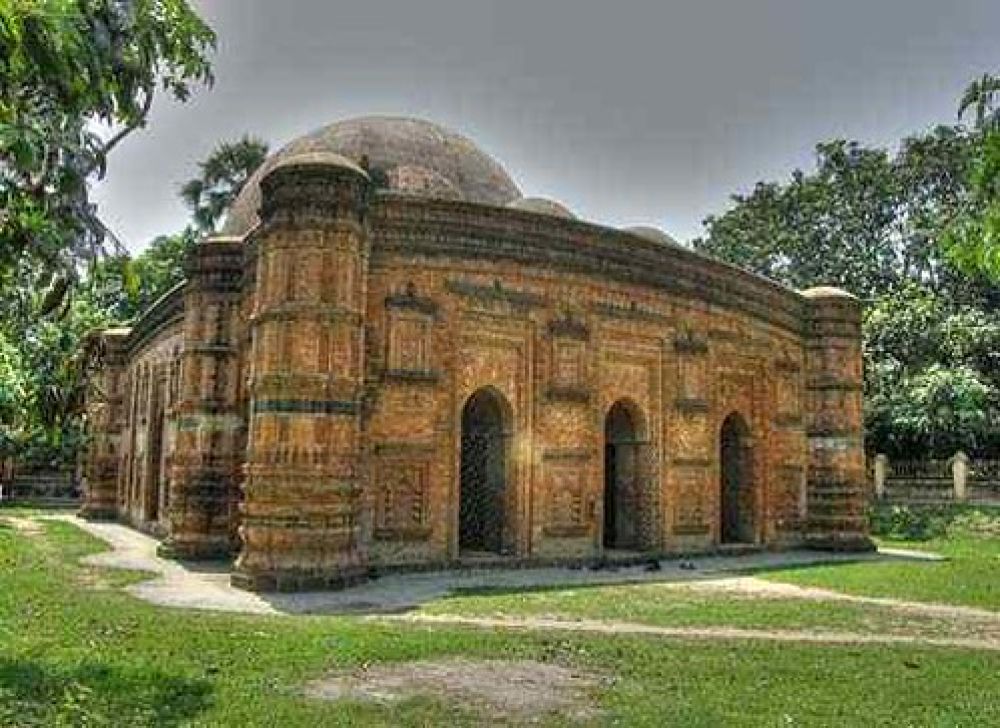

The Bagha Mosque, located in the Rajshahi district of Bangladesh, stands as a testament to the architectural and historical prowess of the Sultanate period in Bengal. This mosque was built in the 16th century, during the reign of the independent Sultan of Bengal, Nasiruddin Nasrat Shah. It has long attracted visitors and historians alike, intrigued by its intricate terracotta ornamentation and the robustness of its design.
Commissioned in 1523 by Sultan Nasiruddin Nasrat Shah, the Bagha Mosque is renowned for surviving the great earthquake of 1897, which heavily damaged many ancient edifices throughout the region. Its importance as a historical and architectural landmark was recognized early, and efforts to preserve it date back to the British colonial period. The mosque underwent considerable renovation in the early 20th century, which included the reconstruction of the domes and walls to preserve its original grandeur.
As a tourism destination, Bagha Mosque plays a pivotal role in the cultural landscape of Bangladesh. It has been an attraction for both domestic and international tourists, historians, and those who admire the Sultanate architecture. Visitors are often captivated by the mosque's 60 domes and the extensively detailed terracotta designs that cover almost every inch of the monument's walls.
Recognizing its significance, the Department of Archaeology of Bangladesh has been actively involved in the preservation and maintenance of the Bagha Mosque. It has been declared a protected monument, which has boosted tourism and facilitated the setup of visitor facilities. Efforts have been made to involve the local community in the preservation and promotion of the mosque as a tourist spot.
In recent years, there has been an emphasis on sustainable tourism in Bangladesh. The idea is to promote tourism in a way that does not harm the cultural heritage or the environment. Eco-friendly lodging options and the promotion of local crafts have started to emerge around the Bagha Mosque area. Visitors are encouraged to engage with the local economy by purchasing authentic handicrafts and experiencing the local cuisine. Additionally, there has been a focus on digital marketing campaigns to promote the mosque as a must-visit destination in Bangladesh.
For those planning to visit the Bagha Mosque, the best time to go is during the winter months, from November to February, when the weather is cooler. The site is open to visitors throughout the year, and guided tours are available for those interested in learning more about the rich history behind this 16th century marvel.
Whether you're a history buff, architecture enthusiast, or simply a curious traveler, the Bagha Mosque in Rajshahi promises an unforgettable journey into the heart of Bengal's Sultanate legacy.